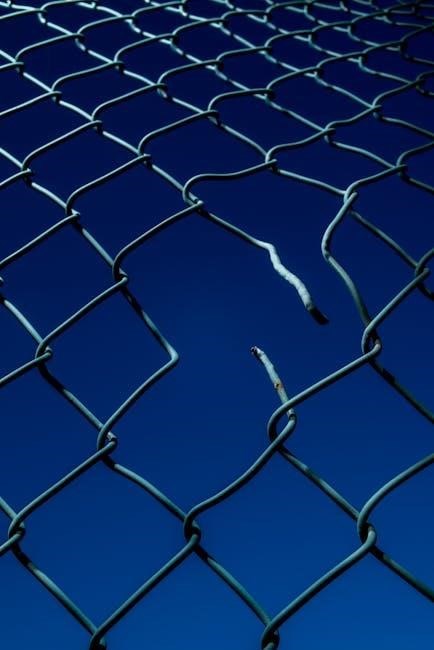Cell Defense: The Plasma Membrane ─ An In-Depth Analysis
Cracking the Code: Cell Defense – The Plasma Membrane and its Protective Mechanisms․ Understanding how cells defend themselves is crucial, and the plasma membrane plays a vital role․ This in-depth analysis delves into the intricacies of the membrane’s role as a primary defense mechanism within cells․
Fortunately, cells have evolved sophisticated defense mechanisms to ensure survival against various threats․ Dr․ Vial, with his vile weapon, highlights the constant battle cells face․ These mechanisms are crucial because, without them, cells would be vulnerable and unable to maintain homeostasis, leading to cell death․
The plasma membrane, as the outermost boundary of the cell, plays a pivotal role in this defense․ It acts as a selective barrier, carefully controlling what enters and exits the cell, much like a sophisticated gatekeeper․ This selective permeability is key to maintaining the cell’s internal environment and protecting it from external threats․
Understanding these defense mechanisms is essential, as they are fundamental to all biological processes․ The cell membrane worksheet answers can provide further insights into how this structure functions․ Furthermore, interactive tools like the Bioman Cell Defense game offer an engaging way to learn about the plasma membrane and its role in cell defense․
Ultimately, these defense mechanisms are crucial for cell survival and the overall health of organisms․
The Role of the Plasma Membrane as a Selective Barrier
The plasma membrane, also known as the cell membrane, acts as a critical selective barrier, controlling the passage of substances in and out of the cell․ This selective permeability is essential for maintaining the cell’s internal environment and protecting it from external threats․ Imagine it as a gatekeeper, carefully scrutinizing every molecule․
The membrane allows some substances to pass through easily while restricting others․ Small, nonpolar molecules can typically diffuse across the membrane, while larger, polar molecules and ions require the assistance of transport proteins․ This controlled entry and exit is vital for nutrient uptake, waste removal, and maintaining proper ion concentrations․
The Bioman Cell Defense game illustrates this concept effectively, allowing users to build a membrane and understand how its structure determines its permeability․ Understanding the role of the plasma membrane as a selective barrier is fundamental to comprehending cell function and how cells maintain homeostasis․ The cell membrane worksheet answers can further clarify this concept․
Without this selective barrier, cells would be unable to maintain the necessary internal conditions for survival․
Plasma Membrane Structure: Phospholipids and the Bilayer
The plasma membrane’s structure is primarily composed of phospholipids arranged in a bilayer․ These phospholipids have a unique architecture, featuring a polar, hydrophilic (water-loving) head and two nonpolar, hydrophobic (water-fearing) tails․ This amphipathic nature drives the phospholipids to spontaneously form a bilayer in an aqueous environment․
In this arrangement, the hydrophilic heads face outwards, interacting with the watery environment both inside and outside the cell, while the hydrophobic tails cluster together in the interior of the membrane, away from water․ This bilayer structure creates a barrier to the passage of water-soluble substances, contributing to the membrane’s selective permeability․
The Bioman Cell Defense game provides a hands-on simulation of building this membrane, highlighting the importance of phospholipid arrangement․ Furthermore, the membrane also contains other lipids, such as cholesterol, which helps to modulate membrane fluidity․ Proteins are also embedded within the lipid bilayer, performing various functions such as transport and signaling․
Understanding the structure of the plasma membrane, especially the phospholipid bilayer, is crucial for grasping its function as a selective barrier․ The membrane’s integrity is vital for cell survival․
Selective Permeability: Controlling Entry and Exit
The plasma membrane exhibits selective permeability, acting as a gatekeeper that controls which substances can enter and exit the cell․ This crucial function is largely due to the phospholipid bilayer’s hydrophobic core, which impedes the passage of polar and charged molecules․ Small, nonpolar molecules, such as oxygen and carbon dioxide, can readily diffuse across the membrane․
However, the passage of larger or charged molecules requires the assistance of membrane proteins․ Channel proteins form pores through which specific ions or small polar molecules can pass, while carrier proteins bind to specific molecules and undergo conformational changes to shuttle them across the membrane․ This allows the cell to selectively transport essential nutrients, ions, and other molecules while preventing the entry of harmful substances․
The Bioman Cell Defense game illustrates these transport mechanisms․ The selective permeability of the plasma membrane is essential for maintaining cellular homeostasis, regulating cell volume, and establishing electrochemical gradients․ Disruptions to membrane permeability can have severe consequences for cell function and survival, as depicted in the game’s scenarios involving Dr․ Vial’s vile weapon․

Understanding these concepts is essential for comprehending cellular processes and maintaining overall health․
Bioman’s Cell Defense Game: An Interactive Learning Tool
Bioman’s Cell Defense: The Plasma Membrane game offers an engaging and interactive way to learn about the structure and function of the cell membrane․ This virtual lab allows students to actively participate in building and repairing a plasma membrane, simulating the dynamic processes that occur within a cell․ By following the game’s instructions, users gain a deeper understanding of phospholipids, membrane proteins, and selective permeability․
The game challenges players to defend the cell against threats, such as Dr․ Vial’s weapon, which damages the plasma membrane․ This scenario emphasizes the importance of the membrane in maintaining cell integrity and homeostasis․ Through gameplay, students explore the roles of different membrane components and their contribution to cell survival․
The interactive nature of the game encourages critical thinking and problem-solving skills․ Students must apply their knowledge of membrane structure and function to make decisions and overcome challenges․ The game provides immediate feedback, allowing players to learn from their mistakes and reinforce their understanding of key concepts․

Bioman’s Cell Defense game is a valuable tool for educators seeking to enhance student engagement and promote active learning in biology․ It offers a fun and effective way to explore the complexities of the plasma membrane․
Building a Membrane: A Step-by-Step Simulation
The “Building a Membrane” simulation provides a hands-on experience in constructing a plasma membrane from its fundamental components․ This interactive activity guides users through the process of assembling a phospholipid bilayer, incorporating proteins, and adding carbohydrates to create a functional cell membrane․ The simulation emphasizes the amphipathic nature of phospholipids, showcasing how their hydrophilic heads and hydrophobic tails arrange themselves to form a stable barrier․
Users learn about the different types of membrane proteins, such as channel proteins and carrier proteins, and their roles in facilitating the transport of molecules across the membrane․ The simulation also highlights the importance of membrane fluidity, demonstrating how phospholipids and proteins can move within the bilayer․
By manipulating the components of the membrane, students gain a deeper understanding of the structure-function relationship․ They can observe how changes in the lipid composition or protein content affect the membrane’s permeability and stability․ The simulation also allows users to explore the role of carbohydrates in cell recognition and signaling․
This step-by-step simulation is a valuable tool for visualizing the complex architecture of the plasma membrane and understanding how its components work together to maintain cell integrity and regulate transport․

Repairing a Damaged Membrane: Understanding the Process
Cell membranes are constantly exposed to various threats that can compromise their integrity․ Understanding how cells repair damaged membranes is crucial for survival․ The process involves a complex interplay of cellular mechanisms aimed at restoring the membrane’s barrier function and preventing the leakage of intracellular contents․ When a membrane is damaged, the first step typically involves the recruitment of repair proteins to the site of injury․
These proteins help to stabilize the damaged area and prevent further disruption․ Membrane fusion is another important mechanism for repairing damaged membranes․ This process involves the merging of vesicles or other membrane fragments with the damaged area to patch up the hole․ Calcium ions play a critical role in membrane repair, triggering the fusion of vesicles and promoting the assembly of repair proteins․
Additionally, cells can use endocytosis to remove damaged membrane segments․ This process involves the engulfment of the damaged area by the cell, followed by its degradation within lysosomes․ The understanding of membrane repair mechanisms is crucial for developing therapies to treat diseases caused by membrane damage, such as muscular dystrophy and neurodegenerative disorders․ Furthermore, research in this area can lead to new strategies for protecting cells from environmental toxins and other stressors․
The Plasma Membrane and Homeostasis
The plasma membrane is paramount in maintaining cellular homeostasis, a state of stable internal conditions necessary for cell survival․ This delicate balance is achieved through the plasma membrane’s selective permeability, which controls the movement of substances in and out of the cell, ensuring the optimal environment for cellular processes․ By regulating the passage of ions, nutrients, and waste products, the plasma membrane prevents drastic fluctuations in the intracellular environment, protecting the cell from damage․
The membrane’s ability to maintain a specific internal pH, ion concentration, and nutrient availability is crucial for enzyme function, protein synthesis, and other essential metabolic activities․ Disruptions to the plasma membrane can compromise its ability to maintain homeostasis, leading to cellular dysfunction and potentially cell death․ For instance, damage to the membrane can cause uncontrolled ion fluxes, disrupting the delicate balance of electrolytes necessary for nerve impulse transmission and muscle contraction․
Furthermore, the plasma membrane’s role in regulating cell volume is essential for preventing osmotic stress․ By controlling the movement of water, the membrane prevents cells from swelling or shrinking excessively in response to changes in the extracellular environment․ Understanding the plasma membrane’s contribution to homeostasis is vital for comprehending cellular physiology and developing strategies to treat diseases that disrupt cellular equilibrium․
Threats to the Plasma Membrane: Dr․ Vial’s Vile Weapon
Imagine a scenario where a nefarious scientist, Dr․ Vial, develops a “vile weapon” specifically designed to target and destroy plasma membranes․ This weapon could introduce various threats, such as disrupting the phospholipid bilayer structure, compromising its integrity and leading to uncontrolled leakage of cellular contents․ Dr․ Vial’s weapon might involve enzymes that degrade phospholipids, causing the membrane to fall apart․
Alternatively, it could involve molecules that insert themselves into the membrane, disrupting its fluidity and permeability, effectively turning the selective barrier into a sieve․ Such an attack on the plasma membrane would have catastrophic consequences for the cell․ Without an intact membrane, the cell would lose its ability to maintain homeostasis, resulting in the uncontrolled influx of harmful substances and the efflux of essential molecules․
This would disrupt critical cellular processes, ultimately leading to cell death․ Therefore, understanding how external factors like Dr․ Vial’s weapon can compromise the plasma membrane is crucial in developing strategies to protect cells from damage and maintain their proper function․ The integrity of the plasma membrane is paramount to cell survival․
The Plasma Membrane in Adaptive Immunity: Antigen Presentation
The plasma membrane’s role extends beyond being a mere barrier; it’s a key player in adaptive immunity through antigen presentation․ Cells, particularly immune cells like macrophages and dendritic cells, engulf pathogens or foreign substances․ These invaders are then processed into smaller fragments called antigens․ The antigens are transported to the cell surface and displayed on the plasma membrane, bound to specialized proteins called Major Histocompatibility Complex (MHC) molecules․
MHC molecules come in two classes: MHC class I, found on virtually all nucleated cells, presents antigens derived from the cell’s interior, signaling potential infections within․ MHC class II, primarily found on antigen-presenting cells (APCs), presents antigens derived from extracellular sources, alerting the immune system to external threats․ This antigen presentation process allows T cells, the foot soldiers of adaptive immunity, to recognize and respond to specific threats․
T cells have receptors that bind to the antigen-MHC complex on the plasma membrane, initiating an immune response․ This interaction triggers the activation of T cells, leading to the elimination of infected cells or the production of antibodies that neutralize the threat․ The plasma membrane, therefore, serves as a crucial platform for communication between cells and the immune system, orchestrating a targeted and effective defense against pathogens․
Worksheet and Answer Key Resources
To solidify your understanding of the plasma membrane and its defense mechanisms, several valuable worksheet and answer key resources are available․ These resources are designed to reinforce key concepts and provide opportunities for self-assessment․ Worksheets often include diagrams to label, fill-in-the-blank questions, and short answer prompts that challenge you to apply your knowledge․

These worksheets cover topics such as the structure of the plasma membrane, including the phospholipid bilayer, proteins, and carbohydrates․ They also delve into the selective permeability of the membrane and the various transport mechanisms that regulate the movement of substances in and out of the cell․ Furthermore, worksheets may explore the role of the plasma membrane in cell signaling and communication․
Answer keys are essential companions to these worksheets, providing detailed explanations for each question․ By reviewing the answer keys, you can identify areas where you may need further study and gain a deeper understanding of the underlying principles․ These resources are particularly helpful for students preparing for exams or anyone seeking a comprehensive review of the plasma membrane’s structure and function in cell defense․ Interactive platforms like Quizlet also offer flashcards and study sets to aid memorization and comprehension․















